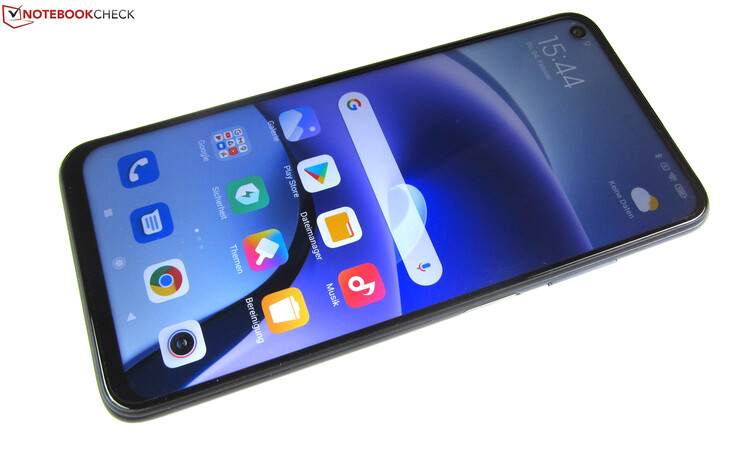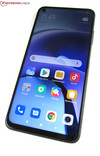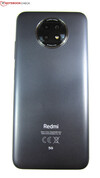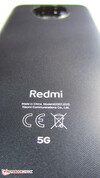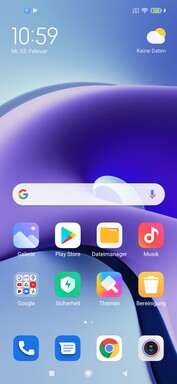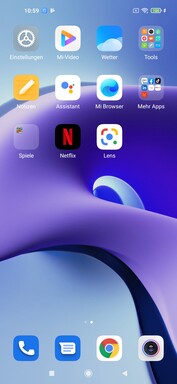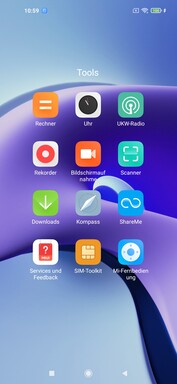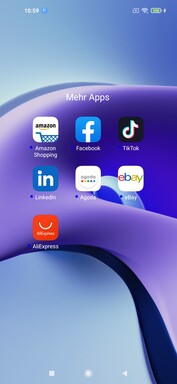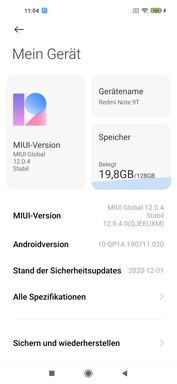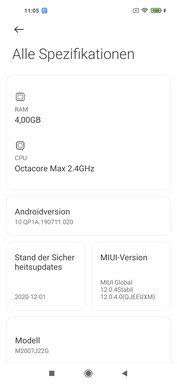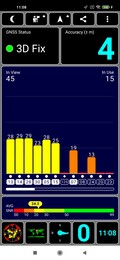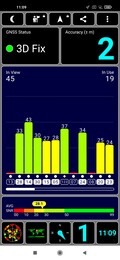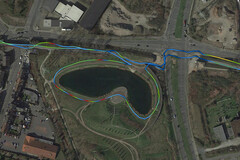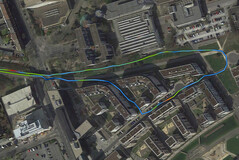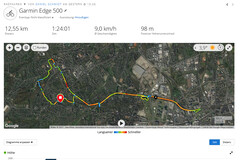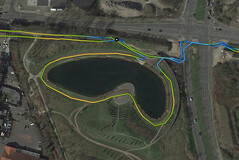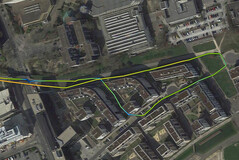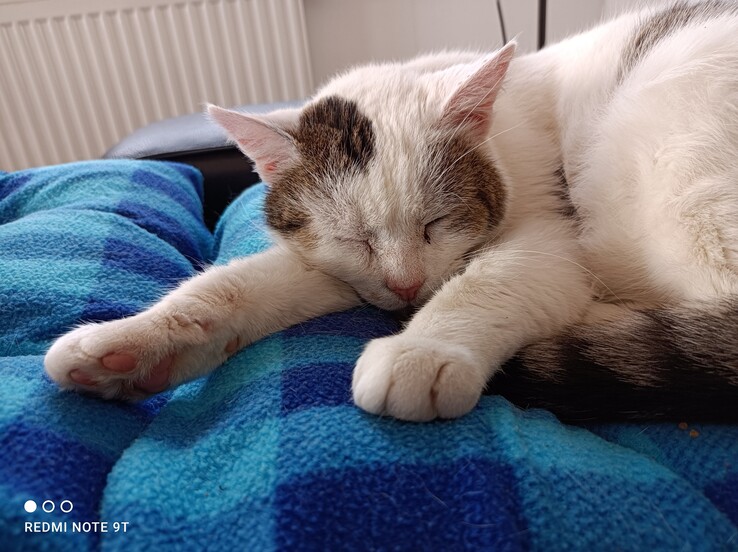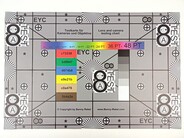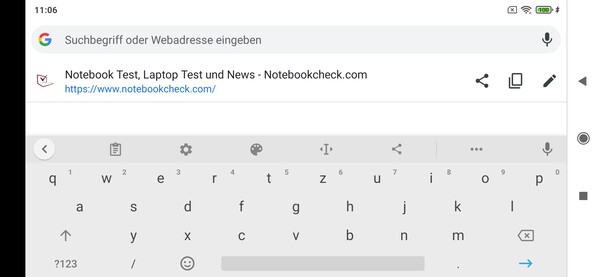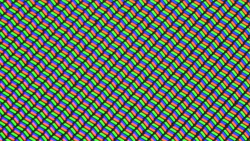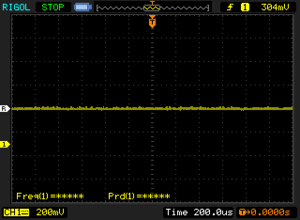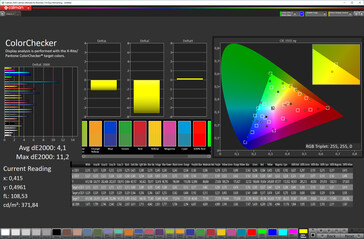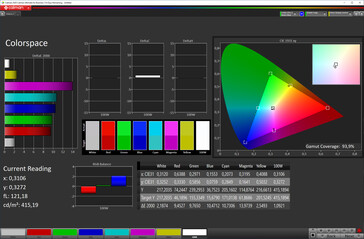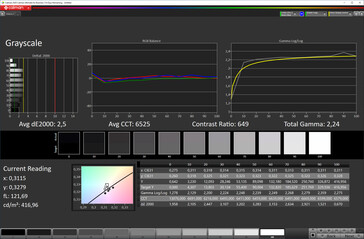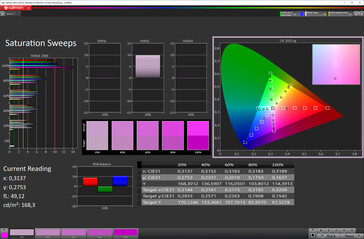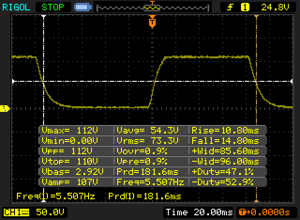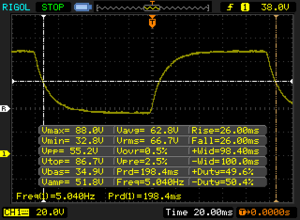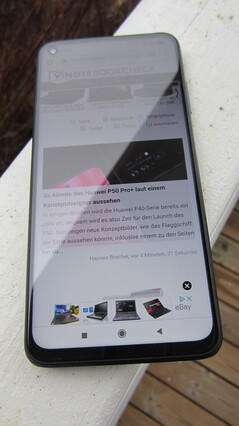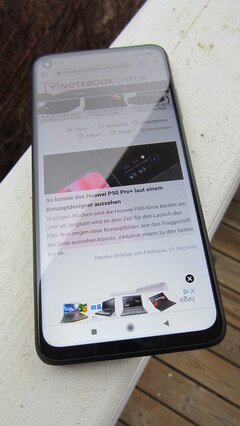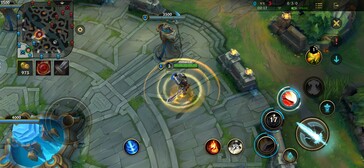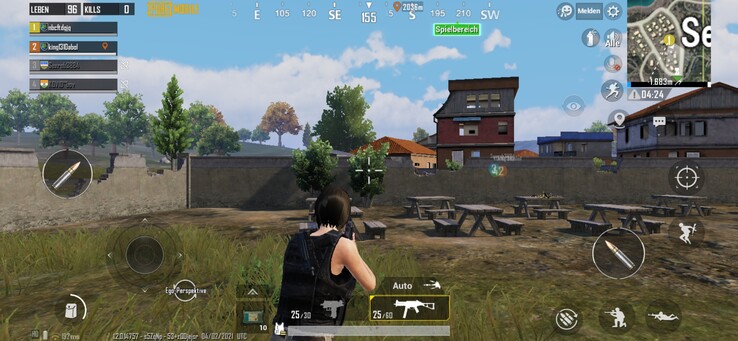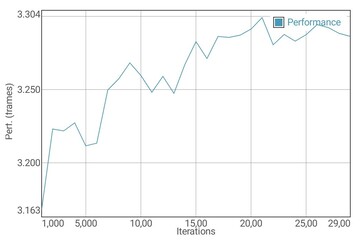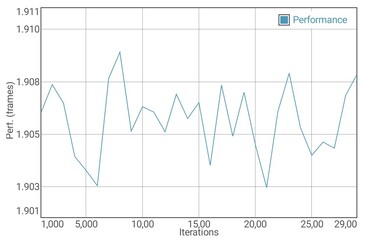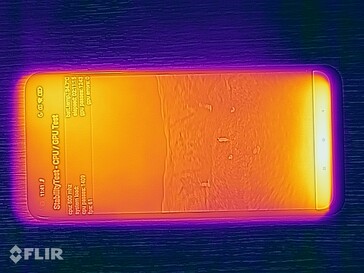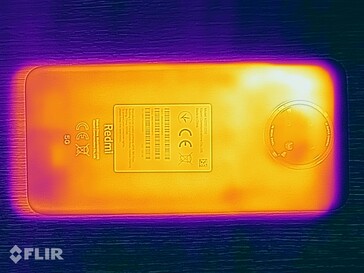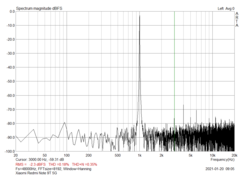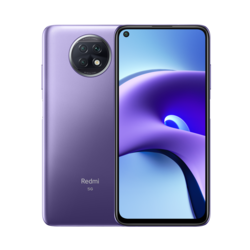Xiaomi Redmi Note 9T 5G smartphone review: 5G for the small budget
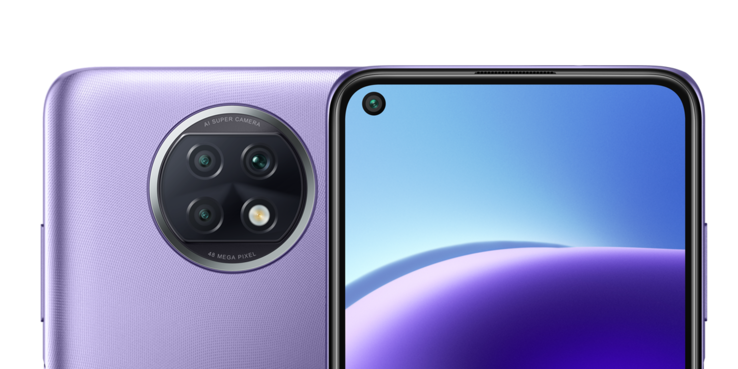
With a price starting at 230 Euros ($279), the Redmi Note 9T is currently one of the cheapest 5G smartphones on the market. The Xiaomi device can establish 5G connections on two SIM cards simultaneously. The 6.53-inch phone is also capable of 4x4 MIMO and is always looking for optimal mobile reception thanks to its 360-degree antenna alignment.
Excluding 5G, the rest of the configuration also looks good: The Redmi Note 9T is equipped with the MediaTek Dimensity 800U, a fast mid-range SoC with 8 cores that delivers performance results comparable to the Snapdragon 765. Other hardware components include a 48 MP triple-camera setup, an IPS display with a resolution of 2340x1080 pixels, and a 5,000 mAh battery with 18-watt fast charging.
Possible contenders in comparison
Rating | Date | Model | Weight | Drive | Size | Resolution | Price |
|---|---|---|---|---|---|---|---|
| 79.7 % v7 (old) | 02 / 2021 | Xiaomi Redmi Note 9T 5G Dimensity 800U, Mali-G57 MP3 | 199 g | 128 GB UFS 2.2 Flash | 6.53" | 2340x1080 | |
| 80 % v7 (old) | 08 / 2020 | Motorola Moto G 5G Plus SD 765, Adreno 620 | 207 g | 64 GB UFS 2.1 Flash | 6.70" | 2520x1080 | |
| 80.1 % v7 (old) | 01 / 2021 | Oppo A73 5G Dimensity 720, Mali-G57 MP3 | 177 g | 128 GB UFS 2.1 Flash | 6.50" | 2400x1080 | |
| 80.1 % v7 (old) | 11 / 2020 | Realme 7 5G Dimensity 800U, Mali-G57 MP3 | 195 g | 128 GB UFS 2.1 Flash | 6.50" | 2400x1080 | |
| 80.1 % v7 (old) | 12 / 2020 | Samsung Galaxy A42 5G SD 750G 5G, Adreno 619 | 193 g | 128 GB UFS 2.1 Flash | 6.60" | 1600x720 | |
| 81.8 % v7 (old) | 10 / 2020 | Xiaomi Poco X3 NFC SD 732G, Adreno 618 | 215 g | 64 GB UFS 2.0 Flash | 6.67" | 2400x1080 |
Case - Stable and grippy plastic chassis
Externally, the Redmi Note 9T fits almost seamlessly into Xiaomi's current budget lineup, because the case design hardly differs from inexpensive counterparts like the Redmi Note 9 Pro, the Redmi Note 9S, and the Redmi Note 9.
Xiaomi's 5G smartphone scores points with good build quality; it has a stable chassis, relatively thin display bezels, and fits well in the hand thanks to its rounded sides. At the same time, it's relatively light for a 6.53-inch device at 199 grams. Like in the Redmi Note 9 Pro and the Redmi Note 9, the selfie camera is discreetly located in the upper left corner of the display. The latter is protected from scratches with Gorilla Glass 5. The fingerprint scanner is located in the power button.
The Redmi Note 9T takes a different path than its Redmi peers when it comes to the back cover. Although it's still only made of plastic, it doesn't have flashy colors or glossy surfaces. Instead, two matte and visually discreet case colors are available: Purple ("Daybreak Purple") and black ("Nightfall Black").
The back doesn't look very high-quality, but it's almost unaffected by fingerprints, and it's slightly roughened like the Xiaomi POCO M3, which makes the smartphone easier to grip. The most striking design element of the back cover is the 48 MP camera. The combination of three lenses and the flash protrudes slightly from the chassis and is surrounded by a silver-colored ring.
Connectivity - NFC and stereo speakers in the Redmi Note 9T
The Xiaomi Redmi Note 9T costs around 270 Euros (~$328) with 128 GB of storage, which is what our review sample also comes with. The manufacturer charges 229.90 Euros (~$279) for the 64 GB version. The 64 GB version uses UFS 2.1 storage, while the 128 GB version uses UFS 2.2 storage. However, both are so close to each other in terms of performance that you shouldn't notice any difference between the two storage variants. Regardless of the size of the internal storage, Xiaomi always equips its 5G smartphone with 4 GB of LPDDR4X RAM.
The internal storage can be expanded via a microSD card that can be of up to 512 GB. However, we couldn't store any apps on it in the test. Even enabling the developer option to allow apps to write to the microSD card didn't change anything.
Besides the memory card, two SIM cards fit in the card slot as well. Other feature highlights: The Redmi Note 9T supports NFC and has an IR blaster and an FM radio in addition to stereo speakers. Furthermore, it supports DRM Widevine L1, which allows users to stream content in HD quality.
Software - Android 10 and MIUI 12 for Xiaomi's 5G smartphone
Xiaomi ships the Redmi Note 9T with Android 10 and its user interface MIUI 12. The Android security patches were still at the level of December 1, 2020 (MIUI 12.0.4.0) at the time of our test (beginning of February), so that they weren't quite up to date anymore. Xiaomi updates its smartphones - at least the newer models - about every three months, so there should be an update in March.
About 108 GB of our review sample's 128 GB is free when you perform an initial setup or a factory reset. However, you have to put up with ads in the system and bloatware. At least the preinstalled third-party apps like Amazon, Facebook, LinkedIn, and AliExpress can all be uninstalled.
Communication and GPS - Good Wi-Fi 5 speeds, low SAR values
Besides standards like 2G, 3G, and 4G, the Redmi Note 9T also supports 5G (band n1/n3/n5/n7/n8/n20/n28/n38/n41/n77/n78/n79). It covers all the important frequency bands in Germany (n1, n3, n28, n78), whereby n78 is especially important since it's used by all major mobile providers (1&1, O2, Telekom, and Vodafone). 4x4 MIMO is supported on 5G by the Xiaomi phone on bands 1, 3, 7, 38, 41, 77, 78, and 79, while bands 1, 3, 41, and 42 are used on 4G.
The Xiaomi device doesn't support mmWave. However, that's not a big problem because the corresponding high-speed 5G networks will probably only be implemented in Germany, Austria, and Switzerland in the course of the next few years anyway. However, the smartphone definitely scores plus points for its low radiation values (head SAR = 0.592 W/kg, body SAR = 0.937 W/kg).
The Redmi Note 9T can exchange data over short distances via Bluetooth 5.1, NFC, and Wi-Fi 5. The Redmi Note 9T delivers stable transfer rates in combination with our reference router, the Netgear Nighthawk AX12, and they're pretty much within the performance range that can be expected from Wi-Fi 5. The smartphone achieves an average of 336 Mb/s for sending data and 366 Mb/s for receiving data.
GPS, GLONASS, BeiDou, and Galileo are the satellite navigation systems supported by the Xiaomi phone. In the test, it determined its position indoors with an accuracy of up to four meters, and this value even reached up to two meters outdoors.
As always, we test whether its positioning skills are as good in motion on a short bike ride, on which we take the Garmin Edge 500 professional navigation device for comparison purposes. The Redmi Note 9T often deviates a few meters from the ideal line on the route that is a bit over 12 kilometers long, but it still works accurately enough for everyday use.
Telephone and call quality
The Redmi Note 9T allows 5G connections on two SIM cards at the same time, whereby data transmission can only take place alternately on one card at a time. VoLTE and VoWiFi are available, as long as the network provider supports this. The Redmi Note 9T delivers good voice quality during calls. Voices are clearly intelligible on both ends of the line even in hands-free mode.
Cameras - Only good in daylight
The Xiaomi Redmi Note 9T uses a triple-camera setup with the same lens composition as the Xiaomi POCO M3. At its heart is a 48 MP sensor with autofocus (f/1.9) that combines four neighboring pixels into one in standard mode and takes 12 MP photos (2992x4000 pixels) as a result. However, the full resolution of the sensor can also be used in "48M" mode.
The main camera records videos at up to 4K and 30 fps. However, electronic image stabilization (EIS) is only available for 720p and 1080p recordings and only up to a maximum of 30 fps in this case (60 fps would also be possible in 1080p).
The 48 MP main camera is complemented by a macro camera and a depth sensor, with a resolution of 2 MP each and an f/2.4 aperture. The macro camera is more of a gimmick than actually helpful, because it always takes a few attempts to finally get a sharp focus on a subject.
The depth sensor is only active in portrait shots, but it does a great job of putting people in the right light here. The 13 MP selfie camera also deserves praise since it takes decent pictures in good lighting conditions and records EIS-supported videos at up to 1080p and 30 fps.
The main camera performs surprisingly well for its price range, provided there is enough light. In this case, photos are sharp, rich in detail, and characterized by good contrast, just like in scene 1. On the other hand, the camera can quickly be pushed to its limit such as in scene 2 that shows the shot of the water castle against the light. Zoom photos (scene 3) are rather bad than good, and fine image details are completely lost in night shots like in scene 4.
Image comparison
Choose a scene and navigate within the first image. One click changes the position on touchscreens. One click on the zoomed-in image opens the original in a new window. The first image shows the scaled photograph of the test device.
Daylight-Scene 1Daylight-Scene 25x zoomLow lightThe tests under controlled light conditions confirm the real-world impression. In good lighting conditions (lower color chart), the Xiaomi reproduces colors quite accurately and doesn't have any problems focusing on the test chart either. However, precision is gone in low-light conditions (1 lux, upper color chart), and the test chart is only dimly visible.
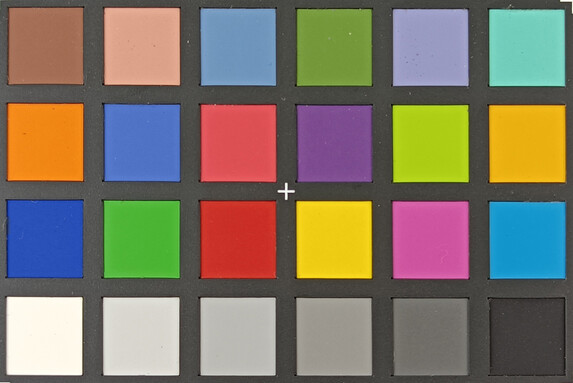

Accessories and warranty - 22.5-watt power adapter in the box
The Redmi Note 9T comes with a 22.5-watt power adapter, a USB cable (Type-A to Type-C), a SIM tool, a quick-start guide, and a booklet with warranty information. A transparent protective case is also included.
The Redmi Note 9T comes with a 24-month warranty.
Input devices and handling - Fast fingerprint scanner
The MediaTek SoC provides fast performance in combination with the UFS 2.1/UFS 2.2 storage. Apps load quickly, and we never had the impression of being slowed down by the smartphone in the test - not even when several apps were running in parallel. The only drawback: 4 GB of RAM is still sufficient for current applications, but it might be a bit limited in the long run.
Users can use biometric authentication on the Xiaomi smartphone via the fingerprint scanner, which unlocks the smartphone very quickly and works very reliably. The second authentication method is 2D facial recognition, which isn't quite as safe. In return, it achieves a surprisingly high accuracy even in dark environments, as long as the screen is bright enough and can illuminate the face sufficiently.
Display - Solid standard specs
The Redmi Note 9T is equipped with solid standard specs when it comes to its display. The 6.53-inch IPS panel has a resolution of 2340x1080 pixels (FHD+), which corresponds to a pixel density of 395 ppi and guarantees a sharp image as a result. However, it offers a refresh rate of no more than 60 Hz.
Xiaomi specifies the brightness of the IPS panel at 450 nits, but this is too low. In fact, the brightness is higher and averages 540.4 nits or cd/m² on a pure white background. If the measurement is repeated with uniformly distributed bright and dark image areas (APL50), up to 565 cd/m² can be achieved. When the brightness sensor is deactivated, the maximum is 460 cd/m². Good: We didn't detect PWM flickering on the IPS panel.
| |||||||||||||||||||||||||
Brightness Distribution: 90 %
Center on Battery: 572 cd/m²
Contrast: 1362:1 (Black: 0.42 cd/m²)
ΔE ColorChecker Calman: 4.1 | ∀{0.5-29.43 Ø4.78}
ΔE Greyscale Calman: 2.5 | ∀{0.09-98 Ø5}
93.9% sRGB (Calman 2D)
Gamma: 2.24
CCT: 6525 K
| Xiaomi Redmi Note 9T 5G IPS, 2340x1080, 6.5" | Motorola Moto G 5G Plus LTPS, 2520x1080, 6.7" | Oppo A73 5G IPS, 2400x1080, 6.5" | Realme 7 5G IPS, 2400x1080, 6.5" | Samsung Galaxy A42 5G AMOLED, 1600x720, 6.6" | Xiaomi Poco X3 NFC IPS, 2400x1080, 6.7" | |
|---|---|---|---|---|---|---|
| Screen | 13% | 3% | -15% | 14% | 8% | |
| Brightness middle (cd/m²) | 572 | 461 -19% | 527 -8% | 490 -14% | 466 -19% | 623 9% |
| Brightness (cd/m²) | 540 | 458 -15% | 499 -8% | 455 -16% | 462 -14% | 600 11% |
| Brightness Distribution (%) | 90 | 93 3% | 87 -3% | 84 -7% | 85 -6% | 93 3% |
| Black Level * (cd/m²) | 0.42 | 0.52 -24% | 0.38 10% | 0.69 -64% | 0.54 -29% | |
| Contrast (:1) | 1362 | 887 -35% | 1387 2% | 710 -48% | 1154 -15% | |
| Colorchecker dE 2000 * | 4.1 | 1.01 75% | 3.5 15% | 4.01 2% | 2.06 50% | 1.8 56% |
| Colorchecker dE 2000 max. * | 11.2 | 2.1 81% | 7.3 35% | 8.1 28% | 6.14 45% | 4.7 58% |
| Greyscale dE 2000 * | 2.5 | 1.5 40% | 2.9 -16% | 2.6 -4% | 1.8 28% | 3.3 -32% |
| Gamma | 2.24 98% | 2.25 98% | 2.29 96% | 2.23 99% | 2.105 105% | 2.26 97% |
| CCT | 6525 100% | 6701 97% | 6502 100% | 6828 95% | 6444 101% | 6712 97% |
* ... smaller is better
Screen Flickering / PWM (Pulse-Width Modulation)
| Screen flickering / PWM not detected | |||
In comparison: 53 % of all tested devices do not use PWM to dim the display. If PWM was detected, an average of 8111 (minimum: 5 - maximum: 343500) Hz was measured. | |||
Apart from brightness, color temperature, and color scheme ("Automatic", "Saturated", and "Standard"), no display parameters can be adjusted on the Redmi Note 9T. However, this isn't a big deal: Activating the "Standard" color scheme results in a color-balanced and high-contrast image. The RGB balance and color temperature are even excellently set in this mode.
Display Response Times
| ↔ Response Time Black to White | ||
|---|---|---|
| 25.6 ms ... rise ↗ and fall ↘ combined | ↗ 10.8 ms rise | |
| ↘ 14.8 ms fall | ||
| The screen shows relatively slow response rates in our tests and may be too slow for gamers. In comparison, all tested devices range from 0.1 (minimum) to 240 (maximum) ms. » 60 % of all devices are better. This means that the measured response time is worse than the average of all tested devices (20.2 ms). | ||
| ↔ Response Time 50% Grey to 80% Grey | ||
| 52 ms ... rise ↗ and fall ↘ combined | ↗ 26 ms rise | |
| ↘ 26 ms fall | ||
| The screen shows slow response rates in our tests and will be unsatisfactory for gamers. In comparison, all tested devices range from 0.165 (minimum) to 636 (maximum) ms. » 88 % of all devices are better. This means that the measured response time is worse than the average of all tested devices (31.6 ms). | ||
Performance - Fast MediaTek SoC as Snapdragon rival
With the MediaTek Dimensity 800U, the Redmi Note 9T is equipped with an octa-core SoC that falls into the mid-range in terms of performance. In combination with the fast UFS storage and the good microSD transfer rates, it ensures fast everyday speeds.
The MediaTek Dimensity 800U's speed is similar to that of the MediaTek Dimensity 720, the Snapdragon 765, and its gaming-focused counterpart, the Snapdragon 765G. While the Snapdragon competition tends to be ahead in graphics-heavy benchmarks, the Dimensity 800U manages a small lead in CPU-intensive benchmarks like Geekbench, but only in the single-core test. In the browser tests, performance is good enough to earn a solid midfield place.
Two benchmarks, 3DMark and AnTuTu, refused to run on the Redmi Note 9T. It's unclear exactly why. However, 3DMark manufacturer UL reports a firmware block on its website, which prevents 3DMark from establishing network connections in many newer Xiaomi smartphone models. We can only hope that an update will fix this problem, so that we can subsequently deliver the test results.
| AnTuTu v8 - Total Score (sort by value) | |
| Xiaomi Redmi Note 9T 5G | |
| Motorola Moto G 5G Plus | |
| Oppo A73 5G | |
| Realme 7 5G | |
| Samsung Galaxy A42 5G | |
| Xiaomi Poco X3 NFC | |
| Average MediaTek Dimensity 800U (n=1) | |
| Jetstream 2 - 2.0 Total Score | |
| Average of class Smartphone (23.8 - 387, n=153, last 2 years) | |
| Samsung Galaxy A42 5G (Chrome 87) | |
| Xiaomi Poco X3 NFC (Chrome 85) | |
| Motorola Moto G 5G Plus (Chrome 83) | |
| Xiaomi Redmi Note 9T 5G (Chrome 88.0.4324.93) | |
| Oppo A73 5G (Chrome 83) | |
| Average MediaTek Dimensity 800U (28.1 - 39.5, n=2) | |
| Realme 7 5G (Chrome 68) | |
| JetStream 1.1 - Total Score | |
| Samsung Galaxy A42 5G (Chrome 87) | |
| Xiaomi Poco X3 NFC (Chrome 85) | |
| Motorola Moto G 5G Plus (Chrome 83) | |
| Xiaomi Redmi Note 9T 5G (Chrome 88.0.4324.93) | |
| Average MediaTek Dimensity 800U (51.4 - 83.5, n=3) | |
| Oppo A73 5G (Chrome 83) | |
| Realme 7 5G (Chrome 86) | |
| Speedometer 2.0 - Result 2.0 | |
| Average of class Smartphone (15.2 - 643, n=126, last 2 years) | |
| Samsung Galaxy A42 5G (Chome 87) | |
| Motorola Moto G 5G Plus (Chrome 83) | |
| Xiaomi Poco X3 NFC (Chrome 85) | |
| Xiaomi Redmi Note 9T 5G (Chrome 88.0.4324.93) | |
| Oppo A73 5G (Chrome 83) | |
| Average MediaTek Dimensity 800U (26.3 - 37.8, n=2) | |
| Realme 7 5G (Chome 86) | |
| WebXPRT 3 - Overall | |
| Average of class Smartphone (38 - 380, n=34, last 2 years) | |
| Motorola Moto G 5G Plus (Chrome 83) | |
| Samsung Galaxy A42 5G (Chrome 87) | |
| Xiaomi Poco X3 NFC (Chrome 85) | |
| Average MediaTek Dimensity 800U (45 - 58, n=3) | |
| Oppo A73 5G (Chrome 83) | |
| Xiaomi Redmi Note 9T 5G (Chrome 88.0.4324.93) | |
| Realme 7 5G (Chrome 86) | |
| Octane V2 - Total Score | |
| Average of class Smartphone (2228 - 121337, n=201, last 2 years) | |
| Samsung Galaxy A42 5G (Chrome 87) | |
| Xiaomi Poco X3 NFC (Chrome 85) | |
| Xiaomi Redmi Note 9T 5G (Chrome 88.0.4324.93) | |
| Motorola Moto G 5G Plus (Chrome 83) | |
| Average MediaTek Dimensity 800U (9999 - 18123, n=3) | |
| Oppo A73 5G (Chrome 83) | |
| Realme 7 5G (Chrome 86) | |
| Mozilla Kraken 1.1 - Total | |
| Realme 7 5G (Chrome 86) | |
| Oppo A73 5G (Chrome 83) | |
| Average MediaTek Dimensity 800U (3013 - 4695, n=3) | |
| Xiaomi Redmi Note 9T 5G (Chrome 88.0.4324.93) | |
| Motorola Moto G 5G Plus (Chrome 83) | |
| Xiaomi Poco X3 NFC (Chrome 85) | |
| Samsung Galaxy A42 5G (Chrome 87) | |
| Average of class Smartphone (257 - 28190, n=156, last 2 years) | |
* ... smaller is better
| Xiaomi Redmi Note 9T 5G | Motorola Moto G 5G Plus | Oppo A73 5G | Realme 7 5G | Samsung Galaxy A42 5G | Xiaomi Poco X3 NFC | Average 128 GB UFS 2.2 Flash | Average of class Smartphone | |
|---|---|---|---|---|---|---|---|---|
| AndroBench 3-5 | -20% | -40% | -27% | -3% | -34% | -2% | 141% | |
| Sequential Read 256KB (MB/s) | 913 | 885 -3% | 860 -6% | 877 -4% | 963 5% | 506 -45% | 736 ? -19% | 2216 ? 143% |
| Sequential Write 256KB (MB/s) | 483.5 | 180.2 -63% | 193 -60% | 188.4 -61% | 476 -2% | 173.1 -64% | 532 ? 10% | 1837 ? 280% |
| Random Read 4KB (MB/s) | 171.1 | 138.1 -19% | 102.2 -40% | 92.6 -46% | 168.5 -2% | 123.4 -28% | 193 ? 13% | 294 ? 72% |
| Random Write 4KB (MB/s) | 197 | 119.3 -39% | 88.1 -55% | 95.1 -52% | 147.7 -25% | 112.6 -43% | 186.3 ? -5% | 334 ? 70% |
| Sequential Read 256KB SDCard (MB/s) | 83.8 ? | 87.1 ? 4% | 84.3 ? 1% | 86.3 ? 3% | 75.2 ? -10% | 82.3 ? -2% | ||
| Sequential Write 256KB SDCard (MB/s) | 63.6 ? | 65.7 ? 3% | 63.7 ? 0% | 67.7 ? 6% | 55.6 ? -13% | 59.1 ? -7% |
Games - Largely smooth gaming at 60 Hz
The MediaTek Dimensity 800U and its ARM Mali-G57 MP3 graphics unit have enough power to run modern games smoothly. For example, PUBG Mobile is consistently rendered at 30 fps in the HD setting, while graphically simpler games like Dead Trigger 2 and League of Legends: Wild Rift can even reach the maximum of 60 fps and still average 30 fps in the highest detail level. The stereo speakers at the top and bottom of the device ensure that sound comes from both sides when the smartphone is held in landscape mode. We determine the fps rates with the Gamebench tool.
Emissions - No throttling, speakers with poor bass
Temperature
The surfaces of the Redmi Note 9T heat up to a maximum of 36.4 °C (~98 °F) during use. Therefore, the smartphone only gets lukewarm at best and feels comfortable in the hand at all times.
As the GFXBench battery tests show, the MediaTek SoC doesn't need to throttle because of excessive temperatures in the interior, since it can always provide its full performance. In both benchmarks, the frame rate doesn't drop even after the 30th rendering of the test scene, meaning it's just as high as at the beginning.
(+) The maximum temperature on the upper side is 36.4 °C / 98 F, compared to the average of 35.2 °C / 95 F, ranging from 21.9 to 247 °C for the class Smartphone.
(+) The bottom heats up to a maximum of 35 °C / 95 F, compared to the average of 34 °C / 93 F
(+) In idle usage, the average temperature for the upper side is 30.1 °C / 86 F, compared to the device average of 32.9 °C / 91 F.
Speakers
Stereo speakers are a distinctive feature in inexpensive smartphones, and that is exactly what the Redmi Note 9T has to offer. One of the two speakers is located at the bottom, while the second is somewhat hidden next to the selfie camera and is only visible through a narrow opening above the display.
The small speakers are not great in terms of sound, and bass tones are painfully lacking. However, the speakers are good enough for listening to music from time to time. Needless to say, sound is better when headphones are used. They can be connected either via the 3.5 mm audio jack or via Bluetooth 5.1, which supports the AAC, LDAC, and LHDC audio codecs.
Xiaomi Redmi Note 9T 5G audio analysis
(+) | speakers can play relatively loud (88.1 dB)
Bass 100 - 315 Hz
(-) | nearly no bass - on average 29.8% lower than median
(±) | linearity of bass is average (12.8% delta to prev. frequency)
Mids 400 - 2000 Hz
(±) | higher mids - on average 5.2% higher than median
(+) | mids are linear (5.3% delta to prev. frequency)
Highs 2 - 16 kHz
(±) | higher highs - on average 5.8% higher than median
(+) | highs are linear (5.4% delta to prev. frequency)
Overall 100 - 16.000 Hz
(±) | linearity of overall sound is average (21% difference to median)
Compared to same class
» 39% of all tested devices in this class were better, 8% similar, 54% worse
» The best had a delta of 11%, average was 35%, worst was 134%
Compared to all devices tested
» 57% of all tested devices were better, 7% similar, 36% worse
» The best had a delta of 4%, average was 24%, worst was 134%
Samsung Galaxy A42 5G audio analysis
(+) | speakers can play relatively loud (82.9 dB)
Bass 100 - 315 Hz
(-) | nearly no bass - on average 68.5% lower than median
(+) | bass is linear (0% delta to prev. frequency)
Mids 400 - 2000 Hz
(-) | nearly no mids - on average 68.5% lower than median
(+) | mids are linear (0% delta to prev. frequency)
Highs 2 - 16 kHz
(-) | nearly no highs - on average 68.5% lower than median
(+) | highs are linear (0% delta to prev. frequency)
Overall 100 - 16.000 Hz
(-) | overall sound is not linear (114.9% difference to median)
Compared to same class
» 87% of all tested devices in this class were better, 3% similar, 9% worse
» The best had a delta of 11%, average was 35%, worst was 134%
Compared to all devices tested
» 96% of all tested devices were better, 1% similar, 3% worse
» The best had a delta of 4%, average was 24%, worst was 134%
Battery life - Power for several days at a time
Energy consumption
The Redmi Note 9T runs quite energy-efficiently with an average of 2.2 watts in idle usage and 3.63 watts under load. Power is supplied via the included 22.5-watt power adapter. It has a slightly excessive capacity for the Xiaomi phone, because it only supports fast charging at 18 watts. Nonetheless, the phone recharges quickly: In the test, it took 2:15 hours for the battery to reach 100% again.
| Off / Standby | |
| Idle | |
| Load |
|
Key:
min: | |
| Xiaomi Redmi Note 9T 5G 5000 mAh | Motorola Moto G 5G Plus 5000 mAh | Oppo A73 5G 4040 mAh | Samsung Galaxy A42 5G 5000 mAh | Xiaomi Poco X3 NFC 5160 mAh | Average MediaTek Dimensity 800U | Average of class Smartphone | |
|---|---|---|---|---|---|---|---|
| Power Consumption | -59% | 14% | -61% | -28% | 9% | -31% | |
| Idle Minimum * (Watt) | 0.68 | 1.5 -121% | 0.58 15% | 1.6 -135% | 0.93 -37% | 0.787 ? -16% | 0.848 ? -25% |
| Idle Average * (Watt) | 2.16 | 2.1 3% | 1.86 14% | 2 7% | 2.47 -14% | 1.693 ? 22% | 1.434 ? 34% |
| Idle Maximum * (Watt) | 2.2 | 2.9 -32% | 1.88 15% | 2.6 -18% | 2.51 -14% | 1.737 ? 21% | 1.618 ? 26% |
| Load Average * (Watt) | 3.63 | 6.7 -85% | 3.1 15% | 7.1 -96% | 5.62 -55% | 3.41 ? 6% | 7.01 ? -93% |
| Load Maximum * (Watt) | 5.78 | 9.2 -59% | 5.01 13% | 9.5 -64% | 6.93 -20% | 5.1 ? 12% | 11.3 ? -96% |
* ... smaller is better
Battery life
One of the highlights of the Xiaomi Redmi Note 9T is its 5,000 mAh battery. Together with the low power consumption, it helps the device achieve very good runtimes. In the test, it takes almost 19 hours of simulated web browsing and even over 20 hours of video playback for the battery capacity to run out. Consequently, the Redmi Note 9T should easily last one or two days at a time in practice before it needs to be plugged in again, even during intensive use.
| Xiaomi Redmi Note 9T 5G 5000 mAh | Motorola Moto G 5G Plus 5000 mAh | Oppo A73 5G 4040 mAh | Realme 7 5G 5000 mAh | Samsung Galaxy A42 5G 5000 mAh | Xiaomi Poco X3 NFC 5160 mAh | |
|---|---|---|---|---|---|---|
| Battery runtime | -36% | 26% | -10% | -11% | -11% | |
| Reader / Idle (h) | 59.4 | 25.8 -57% | 33.6 -43% | 40.5 -32% | ||
| H.264 (h) | 20.3 | 9.7 -52% | 18.4 -9% | 19.8 -2% | ||
| WiFi v1.3 (h) | 18.9 | 15.2 -20% | 23.8 26% | 17.1 -10% | 16.1 -15% | 18.6 -2% |
| Load (h) | 5 | 4.2 -16% | 6.1 22% | 4.7 -6% |
Pros
Cons
Verdict - Budget smartphone with little compromises
With the Redmi Note 9T, Xiaomi puts together a compelling overall package that is especially interesting for all buyers who are looking for a low-priced 5G smartphone, because it's almost impossible to get one for less at the moment. However, the realme 7 5G with 128 GB of storage is very close to the Xiaomi phone in terms of price. The 64 GB version of the Redmi Note 9T costs a few Euros less and earns the title of the cheapest 5G smartphone on the market at the time of performing our review.
Xiaomi's Redmi Note 9T 5G smartphone offers a strong configuration at a low price.
Leaving 5G aside, the overall package is still good, but the competition has a couple of things to say about this. But first, let's look at the additional advantages of the Redmi Note 9T: They definitely include the very enduring and quickly rechargeable 5,000 mAh battery, the solid IPS display, and the fast MediaTek SoC that puts other mid-range smartphones under decent pressure. In addition, there are good extras like VoLTE/VoWiFi, stereo speakers, an audio jack, and an IR blaster.
If 5G isn't absolutely necessary, the Redmi Note 9T doesn't hold all the cards in its price range. Strong competition comes from Xiaomi itself: The Xiaomi POCO X3 NFC has 6 GB of RAM instead of only 4 GB, a better camera, a 120 Hz display, and is a bit cheaper than the Redmi Note 9T.
Price and availability
At the time of writing, the Redmi Note 9T can be found on Amazon in the 128 GB version for $325 and in the 64 GB version for $299.99.
Xiaomi Redmi Note 9T 5G
- 02/09/2021 v7 (old)
Manuel Masiero




